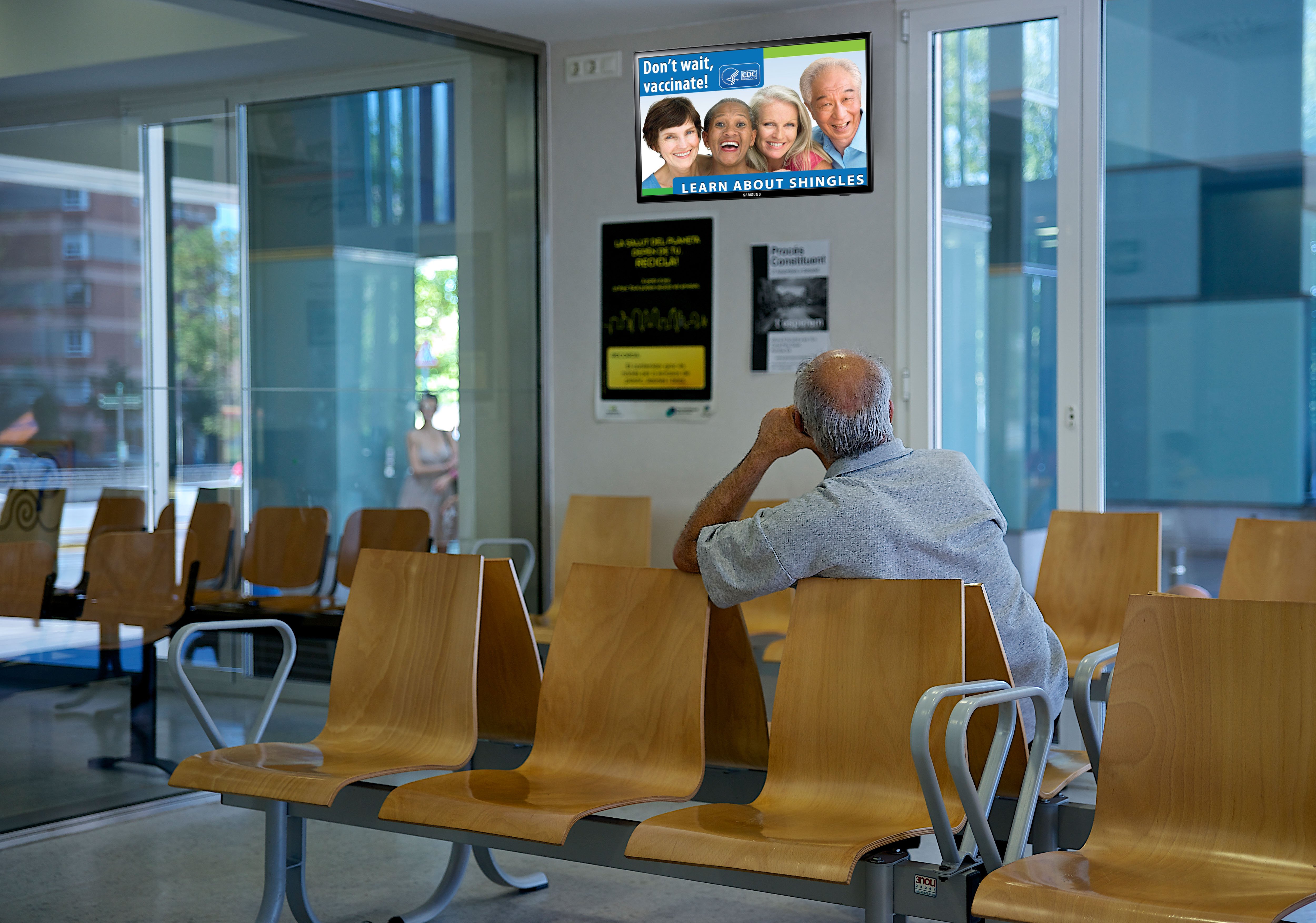
Recently, I visited my doctor’s office. I had completed my forms and was waiting to be seen when I started watching TV in the lobby. Of the many health-related public service announcements, one in particular caught my eye. “Shingles is a painful, localized rash, often with blisters…” began the narrator in a serious tone of voice.
Shingles.
I cringed upon hearing the word. I have family members and friends who have suffered through shingles. Their stories of intense pain and discomfort were horrific. Even before seeing the shingles PSA, I had every intention of getting the vaccine, but kept putting it off. Unfortunately, when we are feeling fine and not experiencing any symptoms, we tend to put off preventative care.
“The shingles vaccine is safe and effective, so ask your doctor today…” the narrator continued in a more hopeful tone of voice. I made a mental note to do just that.
The PSA had given me a lot of information, and I had work to do. I had a few things to mull over. I had some questions to ask. And most importantly, I had a decision to make – all because I trusted that information.
With the mix of information and misinformation out in the world today, how can a person determine which sources to trust? The Internet has changed the way that adults seek out information. The answers to our burning questions are readily available - literally at our fingertips - from countless sources throughout the world. I’m an avid user of YouTube, and have used it over the years to educate myself on a variety of topics. If I need to fix an electrical outlet, for instance, I could search for that topic right now and find hundreds (if not thousands) of how-to videos.
But how do I know which one to trust? How can I make sure that the information in a video is accurate and safe – and won’t leave me seriously injured with a new hairdo? The key is to look at the source. There’s a big difference between a video by Builder Bob - an unlicensed individual who dabbles in electrical outlet repair as a hobby - and ABC Electrical – a company with a full staff of licensed electricians, 50+ years of experience, and industry accreditation. The latter choice is the one I would trust as having the expertise to guide me through the task of repairing an electrical outlet.
With the PSA on the shingles vaccine, I didn’t have to do any homework on the expertise level of the source. The information was coming directly from my doctor’s office, so that gave me peace of mind that it was valid and trustworthy. I value the expertise of my doctor, like most American adults. And although we consult a variety of sources, healthcare providers remain the most trusted source for health information.1
I decided to speak with my doctor during my visit that day. He provided me with all the details, side effects, and study data that supported a 97% efficacy in preventing shingles. The vaccine would spare me the intense pain and discomfort that my family and friends experienced, and since I was already there in his office, I could get my first dose that day. It just made sense, so I decided to move forward with the vaccination.
As a Client Outcomes Manager for hospitals with interactive television systems, I share this lesson with my hospital clients. Point-of-care messaging can be a powerful tool for educating patients to make informed decisions about their health and wellbeing. Evidence suggests that comprehension, motivation, and actual use of information are increased when cognitive effort is reduced.2 Trustworthy information shared at an opportune place and time can make it so much easier for your patients to take action for their health. Just like that brief video about vaccination, in my case.
It was in fact a powerful dose of motivation.
About the Author

Maurice Gesmundo joined the Avidex Client Outcomes team in June 2018. As a Client Outcomes Manager, he brings more than 15 years of disease management, telehealth program management, and project management experience to his role. With his background in population health management, Maurice understands the specific challenges the healthcare industry and hospitals face when it comes to engaging and educating patients. Maurice enjoys working with clients to ensure they are getting the most out of their patient education and engagement systems. He serves Avidex in Healthcare clients in the western region.
1Cutilli CC. Seeking health information: what sources do your patients use? Orthop Nurs. 2010;29(3):214–9.
2Hibbard JH, Peters E. Supporting informed consumer health care decisions: data presentation approaches that facilitate the use of information in choice. Annu Rev Public Health. 2003;24:413-33. doi: 10.1146/annurev.publhealth.24.100901.141005. Epub 2001 Nov 6. PMID: 12428034.

